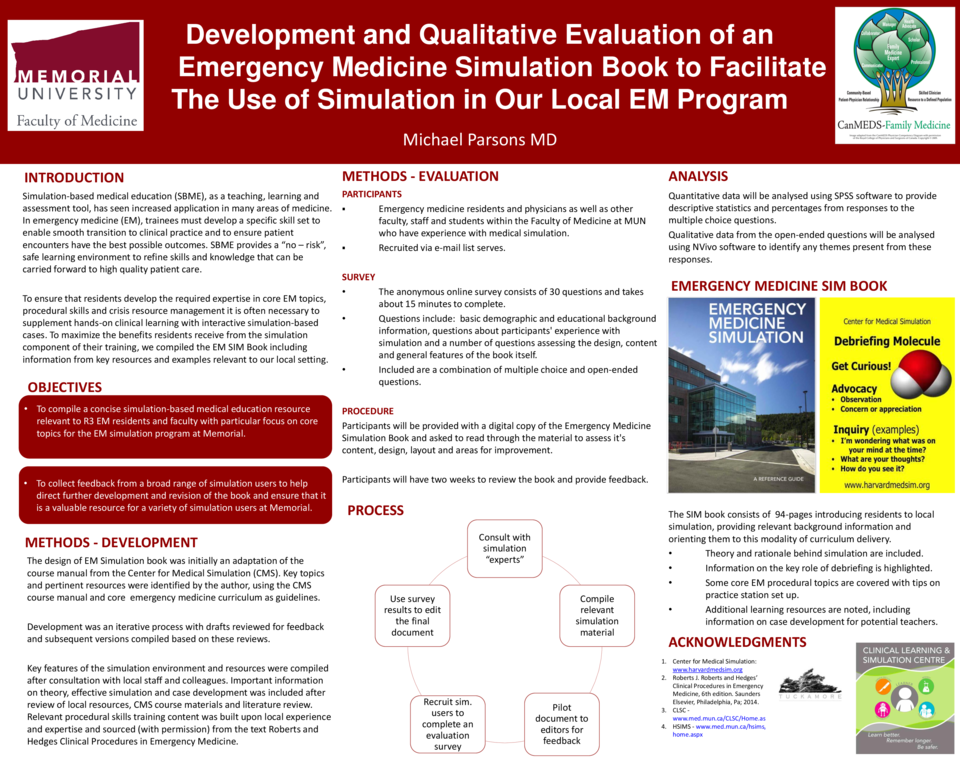Abstract
Presented at: CAEP, Quebec, 2016
Introduction/Innovation Concept: Simulation-based medical education (SBME) has seen increased application in medical education. Emergency medicine (EM) trainees must develop a diverse skill set to smoothly transition to clinical practice and ensure optimal patient outcomes. The competency-based medical education (CBME) framework helps ensure residents develop the required expertise relevant to each of the CanMEDs roles. Simulation is a valuable supplement to hands-on clinical experience and allows skill development in a low-risk setting. The EM Simulation book serves to facilitate the effective application of simulation in our curriculum.
Methods: A number of resources were compiled to meet the needs of our simulation program within Memorial University of Newfoundland. Personal knowledge/experience of the author and local contacts provide site relevant content. Prior training helped in review and selection of materials on simulation theory and debriefing. Core EM resources were sourced for information on procedural training. Literature review on simulation was used to compile a list of resources and materials for further reading. The development and revision of the manual continues as an iterative process with sequential edits based on review and feedback. Qualitative evaluation of the design and value of this document is planned to get feedback from key stakeholders including learners, faculty and simulation lab staff.
Curriculum, Tool, or Material: The final product is a 94-page document provided in print and electronic format to the EM residents and several faculty involved in simulation. It introduces residents to our simulation program, provides relevant background information and orients them to this modality of curriculum delivery. Theory and rationale behind SBME is included. Information on the key role of debriefing is highlighted. Several core EM procedural topics are covered with tips on practice station set up. Additional learning resources are noted, including information on case development for potential teachers.
Conclusion: The simulation book brings together key information to optimize the simulation-based medical education experience for EM residents at Memorial University.
Keywords: innovations in EM education, simulation, residency





